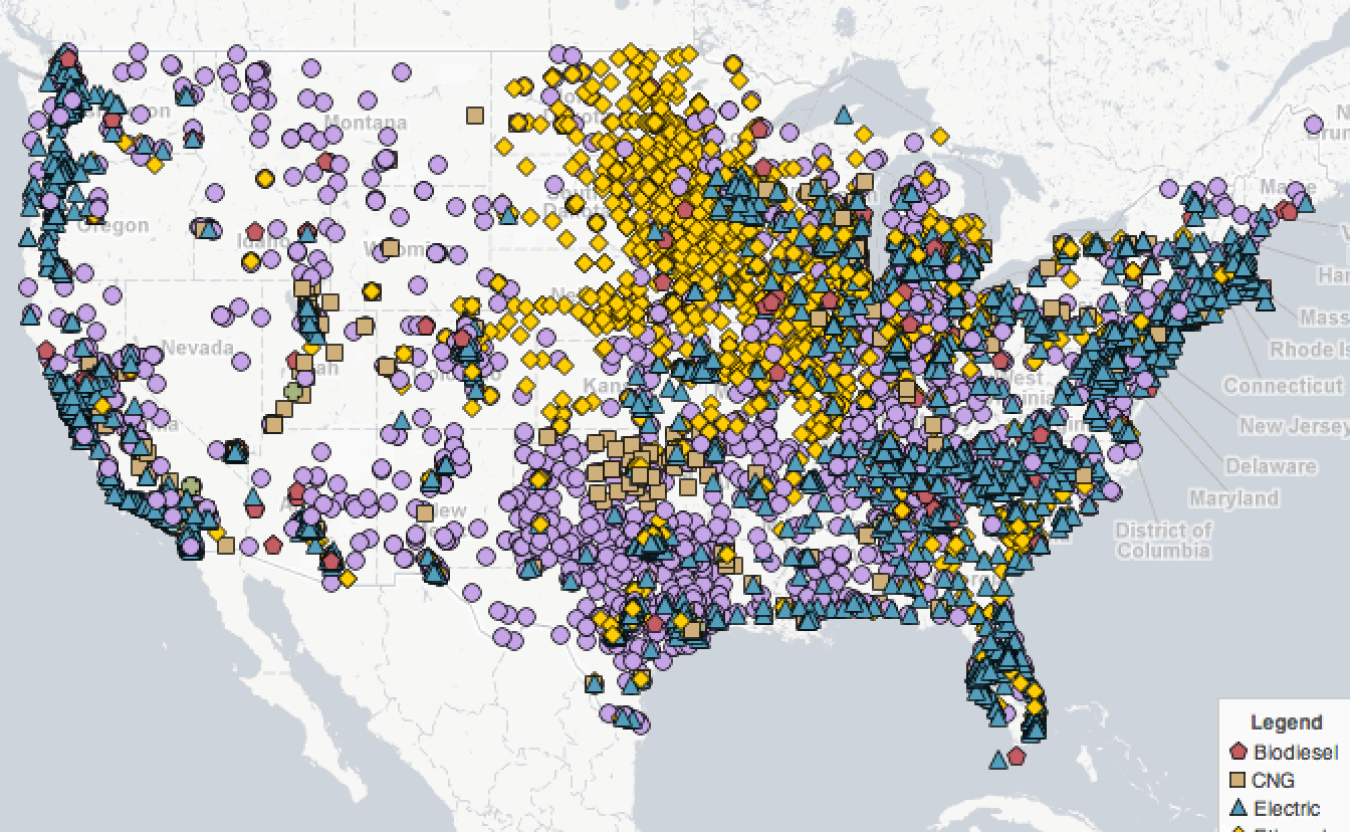Many great technology stories have started with just one humble computer and a desk. Twenty years ago this month, the Department of Energy’s Alternative Fuels and Advanced Vehicles Data Center (AFDC) started just this way at the National Renewable Energy Laboratory (NREL). In 1991, the AFDC began as a telephone hotline and dial-up computer network in response to the Alternative Motor Fuels Act. Although it now hosts more than 20 electronic tools and attracts millions of users annually, the AFDC’s mission remains the same. It helps local governments, businesses, and members of the public find solutions to reduce their petroleum use in transportation, increasing our environmental, energy, and economic security.
Using the AFDC is like having hundreds of experts at your fingertips. Because the AFDC’s data is based on the latest research from the Energy Department’s national laboratories, it’s a great source of objective, reliable information. For example, a comprehensive chart comparing the attributes of hybrid, plug-in hybrid electric (PHEV), and all-electric vehicles (EVs) includes reliable statistics on fuel economy, emissions, fuel cost savings and energy security. The charging section helps potential PHEV and EV buyers find out everything they need to know about charging at home, at work, or on the street. Case studies highlight cities that have led the way in getting ready for PHEVs and EVs, helping other regions learn from their success and replicate their efforts. Similar information is available for all of the alternative fuels, including biofuels, natural gas, and propane.
A variety of tools help fleet managers and consumers alike sort through the many petroleum-reduction options available. Whether they are seeking large commercial vehicles or light-duty passenger cars and work trucks, search tools help users narrow down available vehicles by fuel type and class so they can find ones that meet their needs. Using the Laws and Incentives database, buyers can find federal and state tax rebates, loans, and tax exemptions to minimize their new vehicles’ upfront and lifetime costs. The Alternative Fueling Station Locator and its mobile version allow users to find fueling stations near them or along a specific route. A new partnership with charger manufacturing companies, Google, GPS manufacturers, and others is guaranteeing that the Station Locator remains the best source of information available on vehicle charging locations. All of the information on the Station Locator is also available for download. For those interested in national trends, TransAtlas is a GIS-based map where users can compare various data sets to one other, such as density of flexible fuel vehicles that run on 85 percent ethanol to biofuel plants.
For two decades, the AFDC has provided quality information to businesses, governments, and consumers on alternative fuel and advanced technology vehicles. With more options than ever before, we look forward to more years of the AFDC helping people save money, decrease their petroleum use, and reduce their environmental impact.

